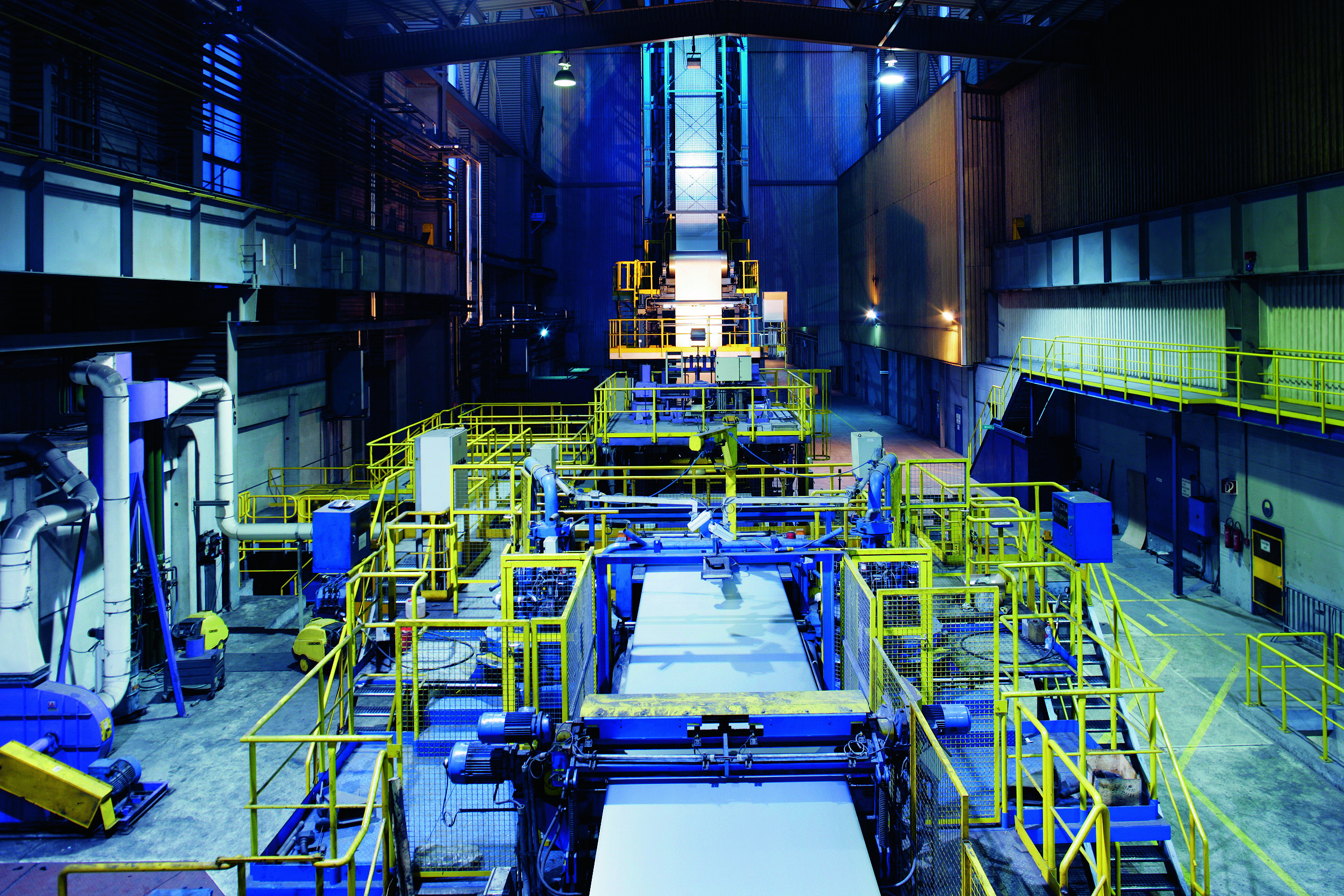Precise temperature control in heat treatment plants ensures maximum product quality
Steel is the backbone of many manufacturing industries – from the automotive sector to construction. To ensure that every product meets the highest quality requirements, one step is particularly decisive: the precise heat treatment of steel.
Steel strips after finishing in a continuous strip processing line at voestalpine Stahl GmbH. Copyright voestalpine AG
For steel strips in a continuous strip processing line, this means in detail: In the heating zone, the strip is first heated to a defined temperature and held at this temperature for a certain time. This results in a phase transformation to austenite. In the subsequent cooling zone, the strip is specifically cooled in order to achieve the desired microstructure (phase composition) in the strip through the so-called austenite decomposition. Since the microstructure is decisive for the mechanical properties of the steel strip, cooling is therefore a crucial process step for the quality and performance of steel products.
Modern control concept
As part of a successful collaboration, experts from the Austrian Institute of Technology (AIT), TU Wien and voestalpine at Linz implemented a modern control concept for strip temperature in the cooling zone: nonlinear model predictive control (NMPC) of the phase fractions in the material. Compared to the state of the art in steel strip process automation, NMPC enables a significant improvement in temperature control accuracy. Under the title “Nonlinear model predictive temperature control of a cooling process for steel strips undergoing phase transformation”, the control concept and the results of its implementation were published in the journal Control Engineering Practice.
Steel strip in a continuous strip processing line at voestalpine Stahl GmbH. Copyright voestalpine AG
Real-time capable mathematical model
The new optimisation-based process control system with NMPC combines in-depth process knowledge with state-of-the-art control engineering algorithms, setting new standards in the automation of steel production. Its basis is a real-time capable mathematical model that takes into account both the temperature evolution and the phase transformations in the steel strip. Using a tailored optimisation algorithm, the controller calculates in real time the optimal control inputs – such as fan speeds for cooling – to guide the strip temperature precisely along the specified setpoints.
The benefits at a glance
- Higher quality and reliability: 51% less temperature deviation – for maximum precision and reliable product quality.
- More homogeneous results: 25% improvement in temperature distribution – a key factor for fewer fluctuations and greater process stability.
- Future-proof production: intelligent real-time control of phase fractions in the material to meet the highest industrial quality requirements.
Competitive advantage through innovation
The results speak for themselves: on a production line in Linz, the new model predictive control concept has already impressively demonstrated its performance. It sets new standards in industrial heat treatment processes and represents an important contribution to intelligent and sustainable steel production. Furthermore, the results provide a solid foundation for further research towards direct control of the microstructure and steel quality.
We congratulate the authors Martin Niederer (AIT) and Andreas Kugi (AIT), as well as their colleagues from voestalpine and TU Wien, on this great success and look forward to further developments in this exciting field of research.
Scientific Publication:
M. Niederer, P. Zeman, S. Sannes, H. Seyrkammer, G. Helekal, A. Kugi, and A. Steinboeck: Nonlinear model predictive temperature control of a cooling process for steel strips undergoing phase transformations; Control Engineering Practice, Volume 165, 106512, 2025.
https://doi.org/10.1016/j.conengprac.2025.106512




